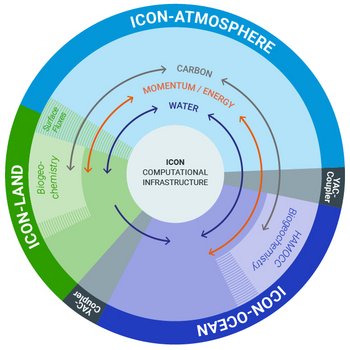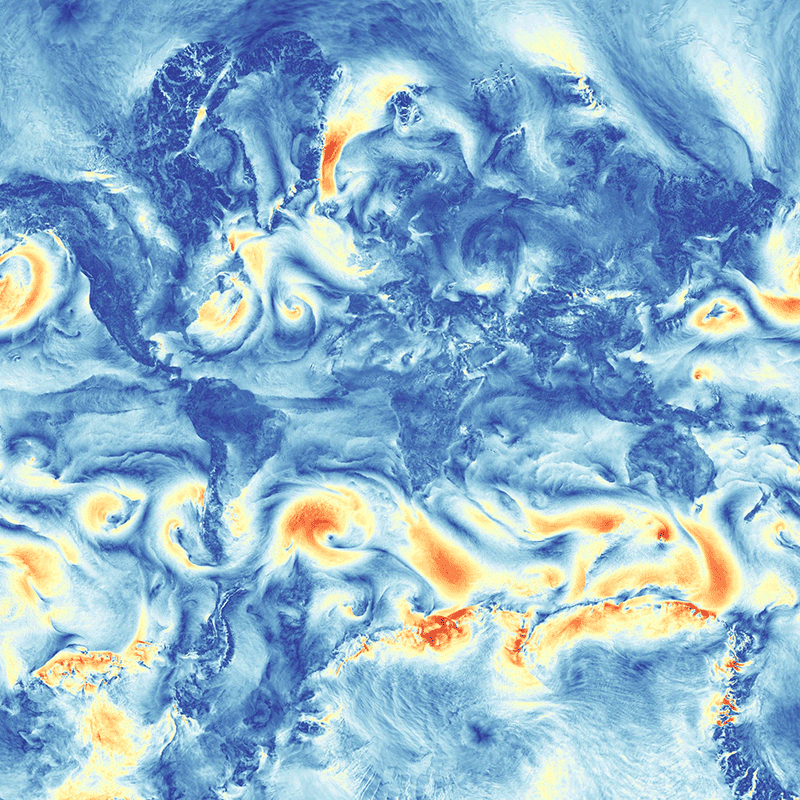The climate model ICON is the central research tool at the Max Planck Institute for Meteorology (MPI-M). ICON is developed to exploit the most advanced information technologies to provide the best possible representation of the climate system. ICON allows scientists to develop and test ideas as to how the climate system works, and thereby helps answer the questions climate change poses to climate science and society, many of which continue to elude traditional models.
ICON, which obtains its name from the usage of spherical grids derived from the icosahedron (ICO) and the non-hydrostatic (N) dynamics, originated as a joint project of the MPI-M and the German Weather Service (Deutscher Wetterdienst, DWD) and has expanded to involve more development partners at the German Climate Computing Center (DKRZ), the Swiss Federal Institute of Technology (ETH) in Zurich and the Karlsruhe Institute of Technology (KIT). It includes component models for the atmosphere, the ocean and the land, as well as chemical and biogeochemical cycles, all implemented on the basis of common data structures and sharing the same efficient technical infrastructure. It is integrated and maintained by a group of experts for model development and application in the institute’s Scientific Computing Laboratory.
The ICON grid allows for a flexible configuration from global to regional domains, with regional refinement, or zoom options as well as special configurations for idealized research experiments. This flexibility was not a design aim, but arose out of how we use ICON, as its development follows our scientific interests. Modifications and new capabilities are introduced to advance our ability to perform specific numerical experiments, designed to answer specific research questions. This is what we mean by experiment-driven model development.

Climate variability, slow processes
An ICON configuration with coarse horizontal resolution (>20km) allows for longer time steps and hence enables experiments requiring long integrations to study slowly evolving processes, like biogeochemical processes in soils, vegetation, ocean, or the evolution of permafrost under warming. The use of such a coarse horizontal resolution precludes an explicit representation of the vertical energy transport by convective storms, not to mention gravity waves, surface roughness, turbulent mixing, clouds and radiation. Also, eddies in the ocean, many bathymetric effects on water mass formation and the deformation of sea-ice are not resolved at this grid size and need to be represented statistically through so-called parameterizations. However, this configuration, which is comparable to traditional climate models, allows for studies using large ensembles on time scales of centuries to many millenia and thereby for an assessment of the role of slow processes on the evolution of the climate system.
New approach to climate modelling, resolved processes
By developing a global configuration of ICON that employs horizontal grids fine enough (< 5km) to resolve the vertical energy transport through deep convection in the tropics, eddies in the ocean and small-scale structures in topography, ocean bathymetry and sea-ice, a more physically-based model can be created. This configuration allows scientists at MPI-M to pose new types of questions, or provide better answers to old questions. Unfortunately, this configuration can only be used for experiments on sub-centennial time scales, as the time step is too small to allow longer integrations, hence the dual strategy and the continuation of more traditional approaches as discussed above.
Developing a simulation system that works at such high resolution introduces new technical challenges, for instance how to use new types of computational infrastructures, such as GPU-based machines, and how to redesign the workflow in order to make it possible to work with the large amount of data that is produced. This also brings new facets to our work which are also helping to reshape climate research.
Components of the Earth system: atmosphere, ocean, land
ICON includes component models for the atmosphere (ICON-A), the ocean together with sea-ice (ICON-O), and the land (ICON-L), which can be used as separate models, or coupled together as a Earth-system model with the option to include the full carbon cycle, bio-geochemical processes in the ocean, and complex treatment of land processes.
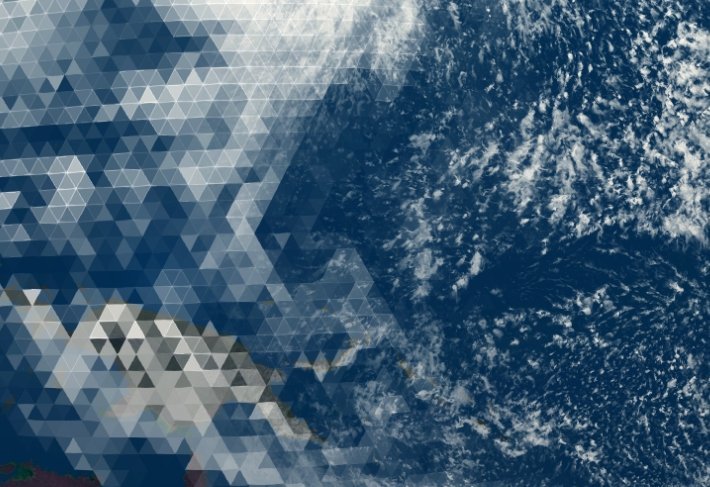
nextGEMS: Next Generation Earth Modelling Systems
nextGEMS is a collaborative European project. Funded by the EU’s Horizon 2020 programme, it will tap expertise from fourteen European Nations to develop two next generation (storm-resolving) Earth-system Models.
WarmWorld
The WarmWorld project brings together eleven partner institutions from Germany to develop the scalability of the ICON climate model for exascale applications. The ultimate goal is to resolve global oceanic and atmospheric coupled circulation systems on kilometer scales.

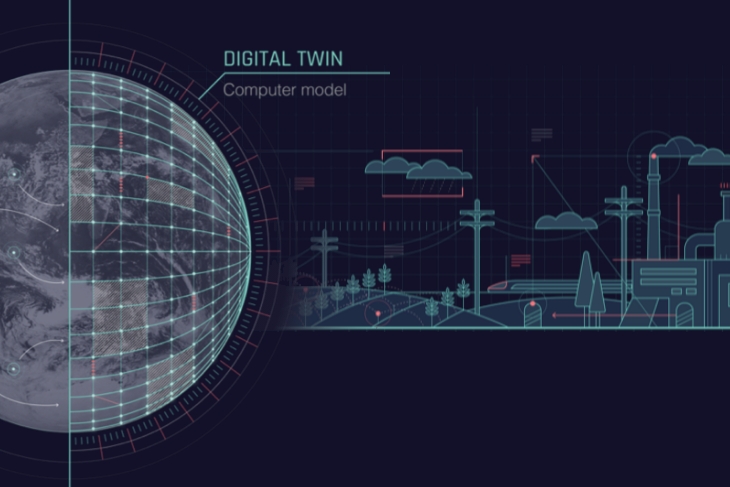
Destination Earth
Destination Earth (DestinE) is an ambitious initiative of the European Union to create digital twins of our planet.
MPI-ESM
MPI-ESM is the former model developed by the MPI-M. It couples the atmosphere, ocean and land surface through the exchange of energy, momentum, water, and carbon dioxide. It is based on the model components ECHAM6 for the atmosphere, MPIOM for the ocean, JSBACHv3 for soils and the terrestrial biosphere, and HAMOCC for the ocean biogeochemistry.
This model was employed in the past coupled model inter-comparison projects (CMIP) and it is still being actively used. It is, however, not being further developed as it does not differ substantially from the configuration of ICON for coarse meshes which is the focus for future developments of this class of model.
Code availability and licenses
Software developments at MPI-M started since 2022 are available under a permissive (usually BSD-3C) Open Source License.
ICON has been available under a BSD-3C license since January 2024 as well. More information at icon-model.org.
Contact
Dr. Daniel Klocke
Group leader – Computational Infrastructure and Model Development
Phone: +49 (0)40 41173-144
daniel.klocke@mpimet.mpg.de
More Content
MPI-M to be one of the first users of Europe's fastest supercomputer JUPITER
One of the first applications on the new exascale computer JUPITER at Forschungszentrum Jülich will be high-resolution simulations of the climate…
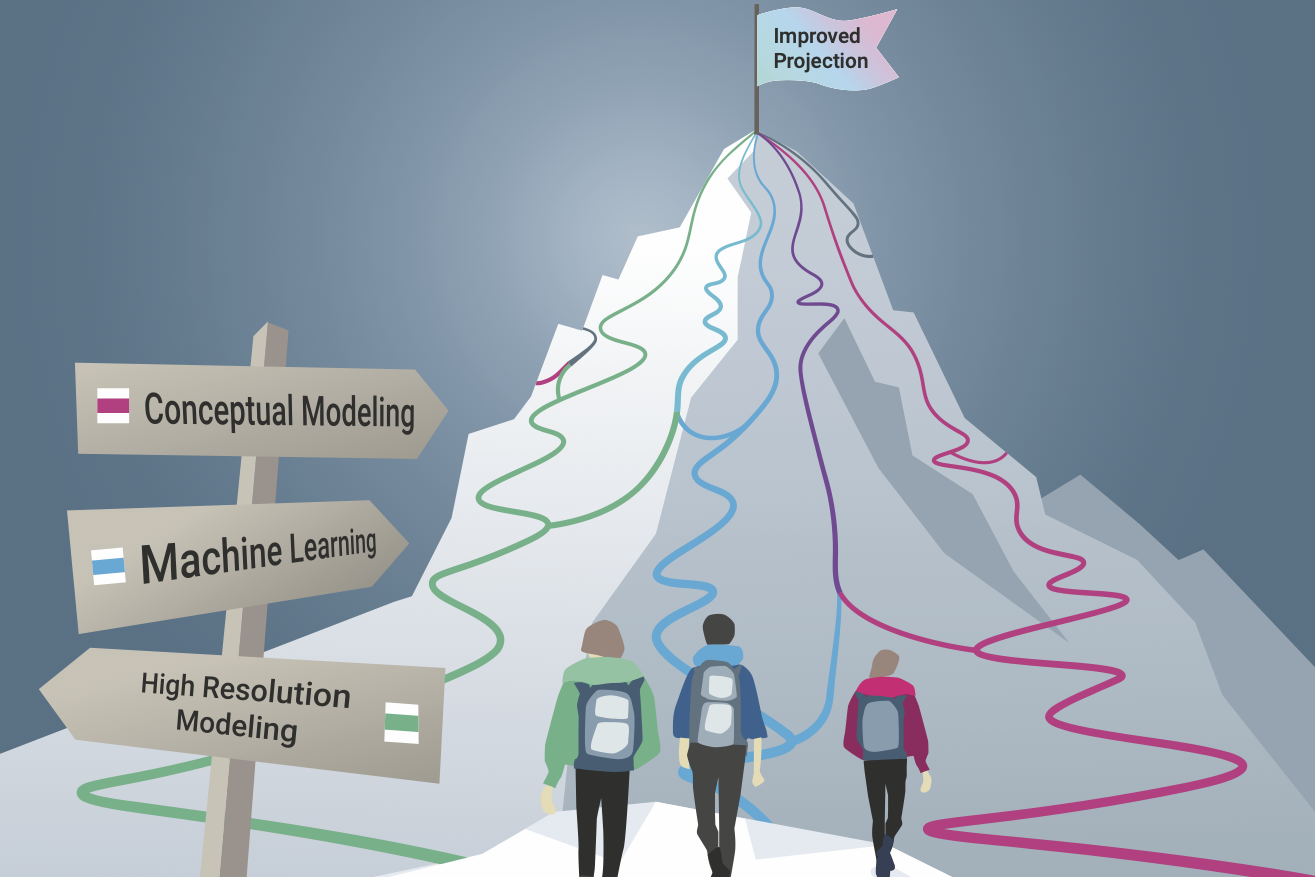
Embracing diversity for the future of climate modeling
What's next for climate modeling? Five internationally recognized female scientists have joined forces to come up with an answer. They argue: Instead…


